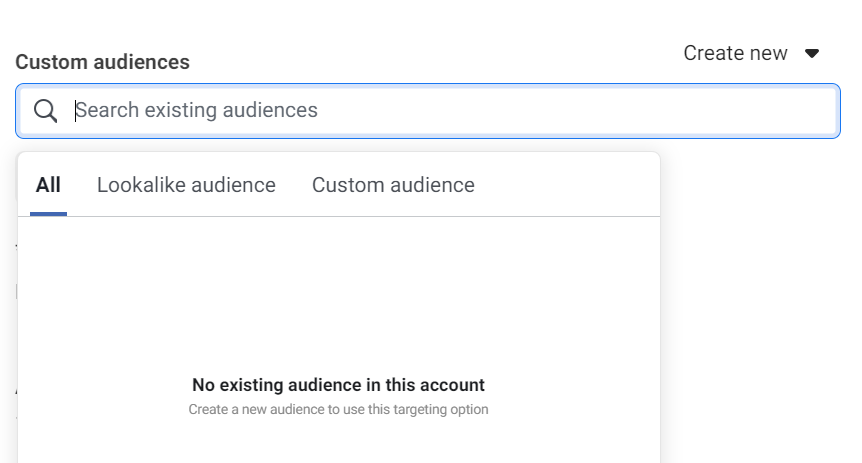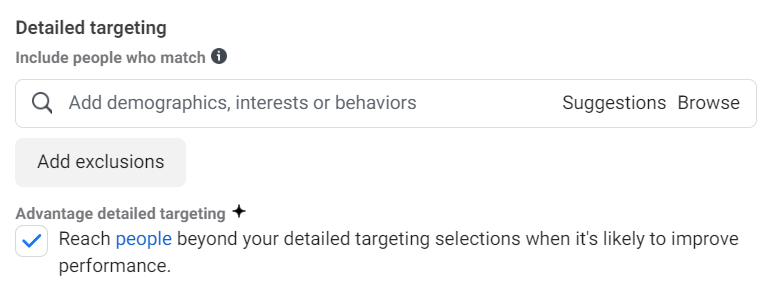In the ever-evolving landscape of digital advertising, Meta Ads emerge as a beacon for marketers seeking precision in their campaigns. With its unparalleled targeting capabilities, Meta Ads harnesses a treasure trove of user data, allowing advertisers to navigate through the complexities of digital spaces to find their perfect audience. This blog is crafted to delve into the intricate world of advanced targeting strategies, offering a roadmap to significantly bolster the effectiveness of your Meta Ads endeavors.
At the heart of this exploration lies a detailed examination of the myriad targeting options Meta Ads provides. From Custom and Lookalike Audiences to intricate interest and behavior targeting, this guide is meticulously designed to unfold the layers of potential each strategy holds. It’s an invitation to marketers to not just settle for the baseline but to harness the full spectrum of targeting capabilities Meta offers, ensuring that every ad reaches the most receptive audience.

This comprehensive guide serves as a beacon for those ready to refine their existing campaigns and for the curious minds eager to venture into new territories of targeting. With actionable insights and step-by-step instructions, the blog aims to transform complex targeting concepts into approachable strategies that marketers can apply to their campaigns. It’s not just about reaching an audience; it’s about connecting with the right audience at the right time.
Whether you are a seasoned marketer looking to enhance your campaign’s precision or a newcomer eager to understand the depths of Meta Ads’ targeting options, this blog promises to equip you with the knowledge and tools necessary to elevate your digital advertising strategy. It’s an essential read for anyone committed to leveraging the advanced capabilities of Meta Ads to craft more effective, impactful, and efficient advertising campaigns.
Understanding the Basics of Meta Ads Targeting
Understanding the foundational elements of Meta Ads targeting is crucial for any marketer aiming to leverage the platform’s powerful advertising capabilities. At its core, Meta Ads provides a suite of targeting options that empower advertisers to pinpoint their audience with unparalleled precision. This section of the blog aims to unpack these basic yet pivotal targeting mechanisms, setting the stage for the exploration of more advanced strategies.
Meta Ads’ targeting capabilities start with geographic location. Advertisers can specify their audience by country, state, city, or even a specific radius around a pinpoint location. This level of detail allows for the creation of localized campaigns that resonate with users based on their physical location, making it ideal for businesses aiming to drive foot traffic to brick-and-mortar locations or tailor their messaging to specific cultural or regional nuances.
Demographics form another cornerstone of Meta Ads targeting, enabling advertisers to segment audiences based on age, gender, language, and more. This demographic information, gleaned from users’ profiles, provides a straightforward way to ensure that ads are seen by the segment of the population most likely to be interested in the product or service being advertised.

Interests and behaviors take targeting a step further by diving into the activities, hobbies, and consumer preferences of users. Meta collects vast amounts of data on what users do, like, and engage with on its platform and across the web. Advertisers can use this information to reach individuals who have shown an interest in similar products or services, or who exhibit behaviors that align with the target market’s characteristics.
Lastly, the granular level of targeting afforded by Meta Ads ensures that advertisers can maximize the relevance of their ads, leading to higher engagement rates and improved ROI. By understanding and utilizing these basic targeting options, marketers can craft campaigns that not only reach but also resonate with their intended audience, laying a solid foundation for the implementation of more advanced targeting strategies.
Leveraging Custom Audiences for Precision Targeting
Understanding Custom Audiences
Custom Audiences transcend traditional targeting by allowing advertisers to directly reach individuals who have previously interacted with their brand, whether through online purchases, app usage, or engagement on social platforms. This direct targeting mechanism leverages existing data—email addresses, phone numbers, or app activity—turning it into a powerful tool to re-engage with your audience in a meaningful way.
Utilizing Custom Audiences Effectively
- Customer File Integration: At the heart of Custom Audiences is the ability to upload customer lists directly into Meta Ads. This involves gathering email addresses or phone numbers from your CRM and uploading them to create a tailored audience. This direct approach ensures your ads reach those with a known interest in your brand, enhancing the likelihood of engagement and conversion.
- Harnessing Website Traffic: The Meta Pixel, a small piece of code placed on your website, is instrumental in tracking visitor activity. By analyzing actions taken on your site—from page views to specific product interactions—advertisers can craft Custom Audiences that reflect varying levels of interest and intent, enabling retargeting strategies that resonate with each user’s journey.
- Targeting App Interactions: For businesses with mobile applications, Custom Audiences can be segmented based on app activity. Whether it’s targeting users who have completed a purchase, abandoned a cart, or frequently use the app, this strategy ensures that your messaging is relevant and timely, encouraging users to re-engage with your app.
- Engaging with Content Interactors: Meta’s ecosystem allows for the creation of Custom Audiences from individuals who have interacted with your content across its platforms. Whether it’s a like, a share, a comment, or event attendance, these interactions signal interest, making it possible to retarget these users with content that deepens their engagement with your brand.

Best Practices for Maximizing Custom Audiences
- Regular List Updates: The dynamism of customer databases necessitates frequent updates to your Custom Audiences to reflect new additions and remove outdated contacts. This ensures your targeting remains relevant and effective, minimizing wasted impressions on disengaged or incorrect contacts.
- Audience Segmentation: Tailoring your messaging requires a deep understanding of your audience segments. By categorizing your Custom Audiences based on specific behaviors (e.g., repeat purchasers vs. cart abandoners) or demographic details, advertisers can craft personalized messages that speak directly to the unique needs and interests of each segment.
- Privacy Compliance: In leveraging Custom Audiences, it’s paramount to adhere to privacy regulations and best practices. Ensuring that your data collection and usage comply with policies like GDPR and CCPA not only protects your brand legally but also fosters trust with your audience.
- Testing and Optimization: The efficacy of Custom Audiences is amplified through continuous testing and optimization. Experiment with different segments, messaging, and creative formats to identify the combinations that yield the highest engagement and conversion rates.
Exploiting Lookalike Audiences to Expand Reach
The Power of Lookalike Audiences
Lookalike Audiences allow you to reach new people who share similar characteristics with your existing customers. This is particularly effective for expanding your reach while maintaining a high level of relevance and potential for conversion.
Creating Lookalike Audiences
- Select Your Source: Choose a Custom Audience, your Facebook Page fans, or a segment of users who have interacted with your content as the source for your Lookalike Audience.
- Define Your Audience Size: Decide on the size of your Lookalike Audience. A smaller audience size is more closely matched to your source audience, while a larger size increases reach but reduces similarity.
- Target Multiple Regions: Create Lookalike Audiences in different countries to explore new geographic markets with high potential.
Strategies for Optimizing Lookalike Audiences
- Test Different Source Audiences: Experiment with different source audiences to see which generates the best results for your specific objectives.
- Combine with Other Targeting Options: Layer additional targeting criteria, such as interests or behaviors, on top of your Lookalike Audience to further refine your targeting.
Advanced Behavioral and Interest Targeting
Beyond Basic Interests
Dive deeper into Meta’s wealth of data on user behaviors and interests. Instead of broad categories, target users based on specific actions they’ve taken, pages they follow, or even purchase behavior and intent.
Implementing Behavioral Targeting
- Purchase Behavior: Target users based on their past purchase behavior or purchase intent, which can be incredibly powerful for e-commerce advertisers.
- Device Usage: Tailor your campaigns based on the devices used by your audience, optimizing for mobile, tablet, or desktop users.
- Life Events: Reach users at pivotal moments, such as recent engagements, moves, or new jobs, to offer highly relevant products or services.
Interest Targeting on Steroids
- Niche Interests: Go beyond broad interest categories by targeting niche interests, ensuring your ads are displayed to highly engaged and relevant audiences.
- Competitor Audiences: Target users interested in your competitors or related industries to capture market share from those already interested in similar offerings.

Geo-Location Targeting: Beyond the Basics
Geo-location targeting stands as a pivotal strategy in the realm of digital advertising, offering advertisers the ability to deliver content to users based on their precise geographical location. This advanced targeting goes beyond mere regional or city-level targeting, diving into hyper-local targeting that can pinpoint neighborhoods or even specific buildings. Such granularity allows for unparalleled precision in reaching potential customers, tailoring messaging that resonates with their local context or immediate surroundings.
Hyper-Local Targeting
The essence of hyper-local targeting lies in its ability to connect with users based on locations as specific as a street address or a radius around a pinpointed spot on the map. This method proves invaluable for businesses aiming to drive foot traffic to brick-and-mortar locations or to tailor their advertising efforts to the unique characteristics of a neighborhood. Whether it’s a café promoting a morning coffee special to nearby residents or a retailer targeting special offers to those within a shopping district, hyper-local targeting ensures that your ads are not just seen but are also highly relevant to the viewer’s current context.
Event-Based Targeting
Event-based targeting harnesses the power of geo-location to engage audiences around specific events or locations at precise times. This strategy is ideal for promotions tied to concerts, sports events, festivals, or conferences, enabling advertisers to tap into the heightened interest and engagement associated with these occasions. By targeting potential customers in the vicinity of an event, businesses can offer timely promotions, directions, or exclusive offers, enhancing the event experience while driving real-time engagement and conversions.

Utilizing Connection-Based Targeting
Connection-based targeting leverages the inherently social nature of Meta’s platforms, enabling advertisers to utilize the relationships between users to amplify their campaign’s impact.
Targeting Friends of Connected Users
This strategy capitalizes on the concept of social proof, operating under the assumption that friends of users who have already engaged with your brand are more likely to have similar interests or behaviors. By targeting these individuals, advertisers can extend their reach within relevant networks, enhancing the credibility of their message through implied endorsements from users’ social circles. This approach not only broadens your audience but does so in a way that builds trust and relevance through association.
Excluding Connected Users
Efficiency in advertising spend is paramount, and excluding users who have already engaged with your brand (such as those who have liked your page or used your app) ensures that your budget is focused on acquiring new users. This strategy prevents ad fatigue among your existing audience and maximizes the potential for expanding your customer base. By refining your targeting to exclude these users, campaigns become more cost-effective, concentrating resources on untapped segments of the market ready to be introduced to your brand.
Conclusion
Advanced targeting strategies on Meta Ads offer a plethora of options to reach your ideal audience with precision. By leveraging custom audiences, lookalike audiences, detailed interest, and behavioral targeting, along with geo-location and connection-based targeting, advertisers can craft highly effective campaigns. Remember, the key to success lies in continuous testing and optimization, ensuring that your strategies evolve alongside changes in your audience’s behavior and Meta’s platform capabilities.
